Reviewed by Dr. Fiona Lee
Human foods can be a delightful treat for your canine companion or, in some cases, a severe health hazard. Many common household foods are surprisingly toxic, even in small amounts, making it crucial for every pet parent to know what are food dogs can’t eat. While some human foods are perfectly safe and even beneficial for dogs, distinguishing between the two can be a challenge. Pet poisonings are a significant concern, with over 401,500 incidents reported annually in the United States, and common household foods are a major contributor to these cases.
Staying informed about which foods to avoid and which are safe for your dog is essential for their well-being. This comprehensive guide serves as your essential “cheat sheet” to help you keep your beloved furry friend safe and healthy. Additionally, if your dog experiences digestive upset, understanding what food to give your dog with an upset stomach can be incredibly helpful.
Why Certain Foods Are Toxic to Dogs
Understanding what are food dogs can’t eat begins with recognizing that canine digestion and metabolism differ significantly from ours. This is why many foods that are harmless to humans can be detrimental or even fatal to dogs. A dog’s body processes certain substances in unique ways.
For instance, theobromine and caffeine, found in chocolate, are metabolized much slower by dogs than by humans. This slow processing means these substances can rapidly accumulate in a dog’s system, potentially leading to severe illness or death. While humans can enjoy cherries, the cyanide present in their pits, stems, and leaves can pose a problem if ingested by dogs in large quantities. Furthermore, cherry pits are difficult for dogs to digest and can cause diarrhea, making it best to avoid them entirely.
Food toxicity can also be influenced by a dog’s size, breed, and existing health conditions. Therefore, it is always vital to consult your veterinarian if you have any uncertainties about foods your dog should not consume.
List of Common Foods Dogs Cannot Eat
Many everyday household foods are dangerous and often toxic to dogs. Some of the most frequently encountered foods that are harmful include alcohol, avocados, macadamia nuts, grapes, raisins, xylitol, and chocolate. It is crucial for your dog to avoid all the items listed below, and remember, this is not an exhaustive list but highlights the most common culprits of what are food dogs can’t eat.
Alcohol
 Dog looking at a glass of alcohol
Dog looking at a glass of alcohol
Due to their smaller size, alcohol can have a much more severe and potentially deadly effect on dogs compared to humans. Even minimal amounts of alcohol can cause significant harm, and the risk increases with smaller pets. Symptoms of alcohol poisoning in dogs mirror those in humans, including vomiting, breathing difficulties, coma, and even death.
Apple, Apricot, Cherry, & Plum Seeds/Pits
While the fleshy part of apples is safe for dogs, the core and seeds are not. Apple seeds contain cyanide, and though small amounts may not be immediately harmful, it’s safest to avoid the core and seeds altogether. Similarly, apricot, cherry, peach, and plum seeds and pits should be strictly avoided. These fruit pits also contain cyanide, which can lead to vomiting, an irregular and fast heartbeat, seizures, coma, and even death, due to red blood cells’ inability to carry oxygen effectively.
Avocado
Avocados are generally not a good food choice for dogs. Although some research on myocardial damage in dogs from avocado consumption hasn’t been widely replicated, avocados are known to cause issues in other mammal species. More critically, an intact avocado pit can cause a dangerous gastrointestinal obstruction if swallowed by a dog. Therefore, it is best to completely avoid feeding this fruit to your pet.
Broccoli
Broccoli contains isothiocyanates, which can be harmful to pets in very large quantities. While very small, occasional amounts might be acceptable, it’s generally better to avoid them, especially since numerous healthier alternatives are available. Additionally, broccoli stalks can pose a choking hazard or cause an obstruction in a dog’s throat.
Caffeine and Coffee Grounds
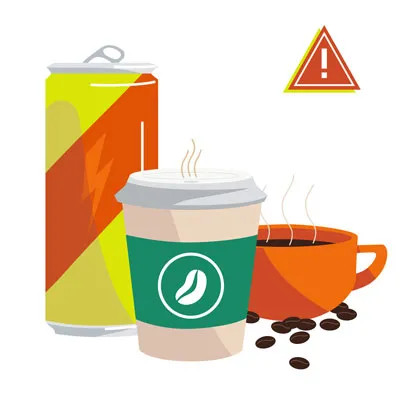 Coffee beans and grounds with a dog's paw
Coffee beans and grounds with a dog's paw
Caffeine contains methylxanthines, compounds that can cause potentially fatal symptoms such as diarrhea, vomiting, seizures, and an irregular heartbeat. Ingesting coffee grounds or high-caffeine drinks can cause a dog’s heart to race, leading to tremors, arrhythmia, breathing difficulties, and other severe symptoms.
Chicken & Turkey Skin, Ham, & Other Fatty Cuts of Meat
Fatty cuts of meat, including ham and the skin from chicken or turkey, should be discarded rather than given to pets as treats. These are harmful to dogs due to their high-fat content, which can trigger acute pancreatitis, a severe and life-threatening illness with serious complications. It’s also critical to avoid turkey and chicken bones as they can splinter, causing intestinal obstruction or damage to the stomach or intestines. Such damage can lead to a fatal abdominal infection.
Chocolate
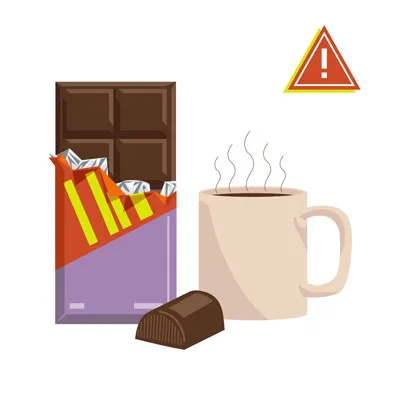 Various types of chocolate
Various types of chocolate
Chocolate toxicity is one of the most frequent causes of pet poisoning, especially around holidays. Dogs absolutely cannot eat any chocolate product. Chocolate contains theobromine, a lethal component whose concentration increases with the darkness of the chocolate. It also contains caffeine, and some sugar-free chocolates may contain xylitol, both of which are highly toxic to dogs.
Dogs and cats cannot metabolize chocolate as effectively as humans. Dark chocolate and baker’s chocolate are the most dangerous, but any type of chocolate can cause problems. Symptoms of chocolate ingestion include hyperactivity, vomiting, diarrhea, pancreatitis, abnormal heart rhythms, and seizures. If your dog ingests any amount of chocolate, no matter how small, contact your veterinarian immediately.
Grapes and Raisins
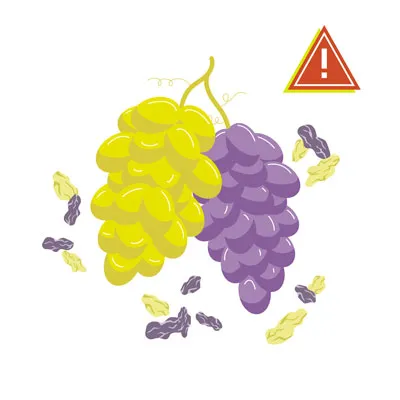 Grapes and raisins in bowls
Grapes and raisins in bowls
Grapes and raisins are exceptionally dangerous for dogs. These fruits can lead to severe issues like kidney failure because their tartaric acid is toxic to a dog’s kidneys. Even a few bites can wreak havoc. Symptoms of grape or raisin poisoning include vomiting, diarrhea, loss of appetite, and changes in urine output, or even a complete inability to pass urine.
Macadamia Nuts, Almonds, & Pistachios
Macadamia nuts can cause dogs to experience painful symptoms such as weakness, overheating, and vomiting. While the exact mechanism of toxicity is still somewhat a mystery, these nuts are definitively toxic to dogs. As few as six nuts can cause severe poisoning in a small dog.
Other nuts, while perhaps not as toxic as macadamias, can still pose risks such as choking hazards or problems if they are flavored or spiced. For instance, pistachios and almonds can be choking hazards.
Milk and Dairy Products
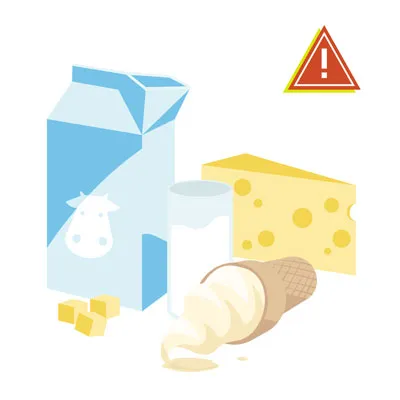 Glass of milk and cheese slices
Glass of milk and cheese slices
Milk and other dairy products should be considered with caution. Some dogs can consume milk or dairy products without issues, but many are lactose intolerant or allergic, potentially experiencing diarrhea and gas from cow’s milk.
Ice cream is also detrimental due to its high sugar and fat content. Instead of ice cream, consider freezing bites of healthy fruits that your dog can safely eat. Cheese, however, is generally acceptable in small quantities. Opt for lower-fat cheese varieties as occasional treats rather than high-fat options.
Mushrooms
It is always safest to avoid feeding your dog mushrooms. Mushrooms contain various toxins that can lead to kidney and liver failure, vomiting, diarrhea, hallucinations, and damage to red blood cells. While commercially grown, washed white mushrooms might be considered safe, it is probably better to choose a different, unequivocally safe treat.
Nutmeg & Cinnamon
Dogs should never be given foods containing nutmeg. This spice can induce hallucinations and severe vomiting. Even if your dog begs for a nutmeg-spiced cookie, resist the temptation. The culprit is myristicin, a compound in nutmeg, whose effects are more pronounced in high doses or in small dogs. If your dog ingests any amount of nutmeg, contact your veterinarian for guidance.
Cinnamon should also be avoided, not due to toxicity, but because it can irritate a dog’s mouth and potentially lead to low blood sugar, which can have serious health consequences.
Onions, Garlic, Chives, & Leeks
 Onions, garlic, and leeks
Onions, garlic, and leeks
Many pet owners are surprised to learn that herbs from the allium family—such as onions and garlic—are unsafe for their dogs. Onions and garlic contain sulfoxides and disulfides, which can damage red blood cells and cause anemia in both dogs and cats. Onion and garlic powders are common in many processed foods, including baby food, so always read labels carefully before sharing store-bought items with your pet.
In fact, all allium plants, including chives and leeks, can cause potentially fatal anemia in dogs and cats. Certain Japanese breeds, such as Akitas and Shiba Inus, are particularly sensitive to allium plants, though they are dangerous for all dogs.
Salt
Excessive salt intake can disrupt the fluid balance in a dog’s cells, leading to tremors, seizures, diarrhea, or even a coma. Whether your dog is eyeing rock salt, homemade play dough, or potato chips, do not let their pleading eyes compromise their health.
Spicy Food
Keep your dog away from spicy foods. Hot, spicy ingredients can cause vomiting, stomach ulcers, or diarrhea, resulting in pain for your dog and potentially costly emergency vet visits.
Sugar-Free Gum & Candy (Xylitol)
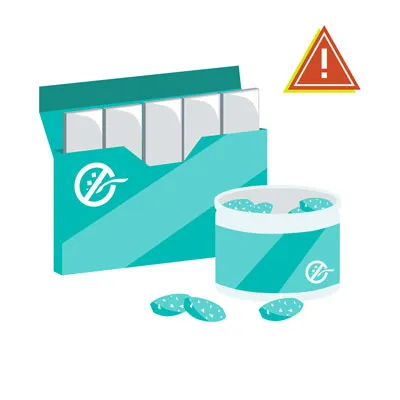 Sugar-free gum and candy
Sugar-free gum and candy
Xylitol is an artificial sweetener found in numerous human foods, including sugar-free gum and candy. In dogs, it can cause a rapid and dangerous drop in blood sugar, leading to weakness and seizures. Some dogs may also develop liver failure.
Poisoning cases involving this artificial sweetener, often found in sugar-free baked goods, are on the rise. The amount of xylitol in just five pieces of gum has the potential to be fatal for a 65-pound dog.
Tomatoes and Raw Potatoes
Tomatoes and potatoes fall into the category of “safe in some forms, unsafe in others.” A ripe, red tomato is generally acceptable. However, the green parts of the tomato plant, along with unripe green tomatoes, contain solanine, which is toxic to dogs.
Potatoes follow a similar rule. Baked or boiled potatoes without additives are generally safe in small quantities. However, raw potatoes contain solanine, making them toxic to dogs. Additionally, it’s worth noting what vegetables are toxic to dogs beyond just potatoes.
Tobacco
Tobacco is extremely dangerous and unhealthy for your dog. Exposure to nicotine-containing products can cause a range of symptoms, including vomiting, diarrhea, rapid or labored breathing, agitation, abnormal heart rate, wobbliness, muscle weakness, high or low blood pressure, seizures, and tremors.
More significant or frequent exposure can lead to blue gums and coma, potentially becoming fatal. Dogs are curious and might ingest a discarded cigarette butt from the sidewalk or an ashtray. If your dog gets into tobacco, immediate veterinary attention is crucial.
Yeast & Raw Dough
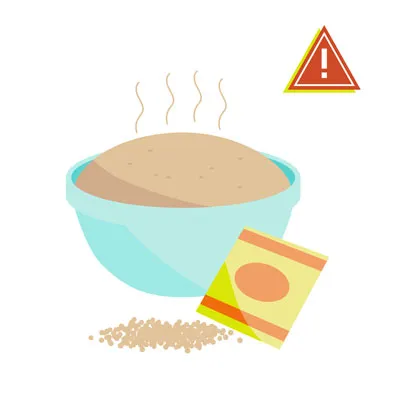 Raw dough with yeast
Raw dough with yeast
Yeast and raw dough are unsafe for dogs for several critical reasons. Raw dough can expand rapidly in a dog’s stomach, causing severe pain and potentially life-threatening gastric torsion or rupture. Furthermore, the yeast and sugar in raw dough can ferment, producing alcohol and leading to alcohol toxicity. This is a severe condition requiring immediate medical intervention and can quickly become fatal.
Raw Meat
Never feed your dog raw or undercooked meat. Raw meat can harbor harmful bacteria like Salmonella or E. coli, which are dangerous to dogs as well as humans. Additionally, bones in raw meat can pose a choking hazard or cause internal injuries.
Rhubarb
Rhubarb, often used in desserts, is not safe for pets. This plant contains soluble calcium oxalate crystals, particularly in its leaves. Ingested in sufficient quantities, these crystals can bind with calcium in the body, leading to a dangerous drop in calcium levels and potentially renal failure. Symptoms include tremors, weakness, drooling, bloody urine, changes in thirst and urination, and vomiting.
Star Fruit
Like rhubarb, star fruit also contains soluble calcium oxalate crystals. It is best to prevent your dog from consuming this fruit.
Flavored Water and Seltzer Water
It is always safest to offer your dog fresh, clean water rather than any flavored or carbonated options. Seltzer and flavored waters can contain added ingredients that are dangerous for dogs, such as sugar or salt. While plain seltzer water might be acceptable in small amounts in an emergency, it can cause gas and bloating. Sticking to plain water is always the best approach.
What Dogs Are Most at Risk if They Consume Toxic Foods?
While all dogs should avoid toxic foods, some are more vulnerable to their effects. Understanding these risk factors can help you be extra vigilant for certain pets.
- Small breeds vs. large breeds: Smaller dogs are at greater risk due to their lower body weight, especially when exposed to substances like chocolate.
- Puppies: Younger dogs have less developed digestive and immune systems, making them more susceptible to certain substances, including raw dog food.
- Elderly dogs: Older dogs may face higher risks due to pre-existing health conditions. For example, dogs with certain health problems should not be fed raw dog food.
- Dogs with pre-existing conditions: Many existing health conditions, such as diabetes or kidney disease, can increase a dog’s risk when exposed to toxic foods. For instance, managing a dog with diabetes might involve understanding what vegetables can a diabetic dog eat to avoid further complications.
How To Prevent Dogs from Eating Toxic Foods
Accidents can happen, but proactive measures can significantly minimize the risk of your beloved dog ingesting unsafe human food.
1. Store Foods Out of Reach
Ensure that your dog cannot access any toxic foods. Keep dangerous items on high shelves that your dog cannot reach or securely locked away in cabinets.
2. Avoid Feeding Dogs from Your Plate
Do not feed your dog from your plate or in the kitchen while you are cooking, even if you intend it as a small treat. It is safest to only give your dog treats specifically formulated for canines.
3. Educate Family Members and Guests
Inform your family members, including children, and guests about the importance of not sneaking any human food to your dog, no matter how tempting it may be.
4. Be Careful During Holidays
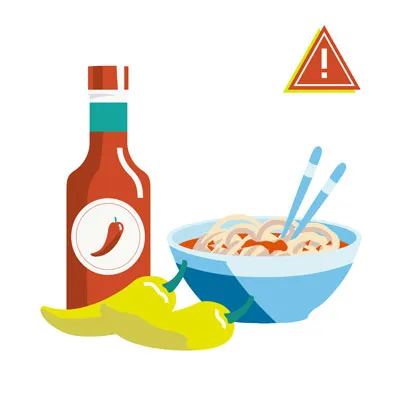 Dog looking at holiday food spread
Dog looking at holiday food spread
Be extra cautious during the holidays. The busy atmosphere can easily lead to a lapse in vigilance while cooking and entertaining.
If, despite your precautions, your dog consumes something toxic, being prepared can help you act quickly. Keep emergency contact information readily accessible for 24/7 emergency veterinarians and poison control centers, especially during holidays.
What To Do if Your Dog Eats Something Toxic
If your dog consumes toxic food, seek help as quickly as possible. Familiarize yourself with the symptoms of food toxicity so you can quickly recognize if your dog has eaten something harmful. Symptoms vary depending on what was ingested but can include listlessness, distress, pain, vomiting, bloody stools, etc. Sometimes a dog’s stomach may become bloated from gas and feel hard to the touch; this painful condition can lead to a stomach rupture if not treated promptly.
If you observe these symptoms, take the following actions:
- Call your veterinarian or poison control immediately. Timing is critical, as treatments are generally more successful and hospitalization shorter if a dog receives fast help.
- Be ready with all pertinent information, such as the type of food eaten, the amount consumed, and the time of ingestion.
- Avoid administering home remedies unless specifically advised by your veterinarian, as remedies can vary depending on the ingested substance. Even inducing vomiting can be harmful in certain situations.
Pets Best Can Help You Keep Your Dog Healthy
From common household toxins to unsafe foods, keeping track of everything your dog shouldn’t get into can be challenging. Dogs aren’t always discerning in their tastes, and some may even engage in behaviors like eating their own poop! However, by following this guide and remaining vigilant, you can significantly help protect your dog from harmful foods.
The good news is that there are many safe and healthy foods your dog can enjoy! Discover which ones on our list your dog loves and offer them as treats when they’ve been a good companion. If you are ever unsure about any food, always consult with your veterinarian.
Pet insurance is an excellent way to help protect your dog from unexpected toxins they might encounter. At Pets Best, our dog and puppy insurance plans can be customized to your pet’s unique needs. Additionally, Pets Best policyholders have access to a 24/7 Pet Helpline, allowing them to speak with a veterinary expert anytime, which can be invaluable if you’re concerned about something your pet may have eaten.
References
- “Top 10 dog poisons,” Hilary Parker (5/2023), WebMD, https://www.webmd.com/pets/dogs/top-10-dog-poisons
- “What happens if a dog eats chocolate?” (10/2023), Colorado State University, https://vetmedbiosci.colostate.edu/vth/animal-health/why-is-chocolate-bad-for-dogs/
- “Fruits and vegetables dogs can or can’t eat,” (3/2024), American Kennel Club, https://www.akc.org/expert-advice/nutrition/fruits-vegetables-dogs-can-and-cant-eat/
- “What to do if your dog drinks alcohol,” Jerry Klein (7/2023), American Kennel Club, https://www.akc.org/expert-advice/vets-corner/is-alcohol-dangerous-for-dogs/
- “Can dogs eat apples?” Hector Joy (12/2022), PetMD, https://www.petmd.com/dog/general-health/can-dogs-eat-apples
- “Can dogs eat plums?” Katie Koschalk (7/2023), Chewy, https://be.chewy.com/nutrition-pet-diet-tips-can-dogs-eat-plums/
- “Avocado (Persea spp) Toxicosis in Animals,” Cristine Hayes (9/2024), Merck Veterinary Manual, https://www.merckvetmanual.com/toxicology/food-hazards/avocado-persea-spp-toxicosis-in-animals
- “People foods to avoid feeding your pets,” (n.d.), ASPCA, https://www.aspca.org/pet-care/animal-poison-control/people-foods-avoid-feeding-your-pets
- “People foods dogs can and can’t eat,” (3/2024), American Kennel Club, https://www.akc.org/expert-advice/nutrition/human-foods-dogs-can-and-cant-eat/
- “Can dogs eat nuts?” Amanda Ardente (1/2023), PetMD, https://www.petmd.com/dog/nutrition/can-dogs-eat-nuts
- “Can dogs drink milk?” Sandra C. Mitchell (1/2024), PetMD, https://www.petmd.com/dog/nutrition/can-dogs-drink-milk
- “Can dogs have nutmeg?” Barri J. Morrison (11/2023), PetMD, https://www.petmd.com/nutmeg-safe-dogs
- “Onion, garlic, chive, and leek poisoning in dogs,” Renee Schmid et al. (2024), VCA Animal Hospitals, https://vcahospitals.com/know-your-pet/onion-garlic-chive-and-leek-toxicity-in-dogs
- “Can dogs eat tomatoes?” Anna Burke (10/2024), American Kennel Club, https://www.akc.org/expert-advice/nutrition/can-dogs-eat-tomatoes/
- “Can dogs eat potatoes?” Katherine Ripley (11/2023), American Kennel Club, https://www.akc.org/expert-advice/nutrition/can-dogs-eat-potatoes/
- “What to do if your dog eats a cigarette butt,” (6/2023), American Kennel Club, https://www.akc.org/expert-advice/health/dog-ate-cigarette-butt/
- “Dough & dogs: Why it’s bad and what you can do,” Lisa Goldstein (7/2024), Preventive Vet, https://www.preventivevet.com/dogs/dough-is-toxic-to-dogs
- “Rhubarb,” (n.d.), Pet Poison Helpline, https://www.petpoisonhelpline.com/poison/rhubarb/
- “Can dogs drink carbonated water?” Heather Logue (n.d.), Rover, https://www.rover.com/blog/can-dogs-drink-carbonated-water/
- “What fruits can dogs eat?” Ellen Malmanger (2/2024), PetMD, https://www.petmd.com/dog/nutrition/what-fruits-can-dogs-eat
- “Can dogs have green beans?” Anna Burke (8/2022), American Kennel Club, https://www.akc.org/expert-advice/nutrition/can-dogs-have-green-beans/
- “About pet food safety,” (4/2024), CDC, https://www.cdc.gov/healthy-pets/about/pet-food-safety.html
